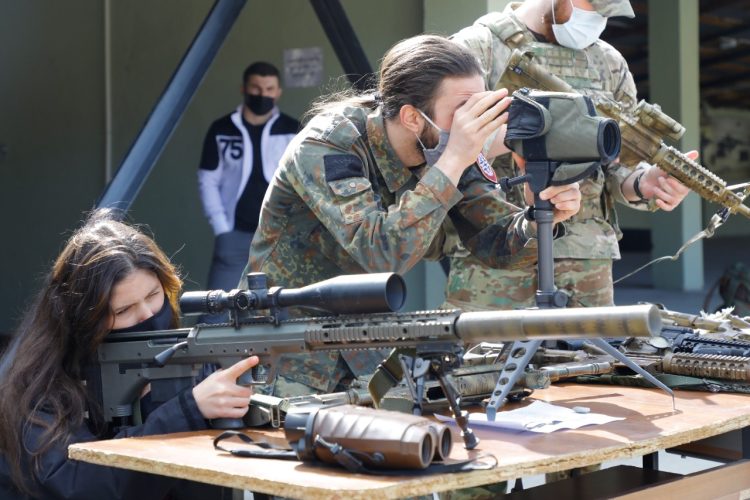
Expert on Mzia Amaghlobeli slapping Irakli Dgebuadze: “Momentary pain is not considered pain! The sound of the slap on the face was like a faint clap; if clapping were painful, we wouldn’t clap”
21/07/2025 15:34:00 Politic
“I reviewed both videos with good lighting. No signs of blood discoloration were observed here. [Irakli Dgebuadze] appears completely composed a minute and a half later—momentary pain is not considered pain,” said expert Natia Kharati during the trial of Mzia Amaghlobeli, the founder of “Batumelebi” and “Netgazeti,” at the Batumi City Court, where she was questioned as a witness.
According to her, no physiological changes were observed in Irakli Dgebuadze following the incident.
“If blood vessels were damaged, there could be a change in color; many factors determine pain, but no objective signs confirming this are visible. Dgebuadze has no complaints. We have no signs of actual damage at this moment. Regarding potential risks, there could have been bruising, for example, if you fall and it hurts, it means the damage appeared a few hours later. Also, some people may be born without feeling pain. Acute pain did not result in any damage, and no inflammatory process developed a few hours later. I cannot comment on this person’s [Irakli Dgebuadze’s] mental health. He works in a responsible position. I believe he has undergone the necessary procedures, and I don’t think people with such a mindset would be employed.
Acute pain is always expressed in some way, always accompanied by motor activity. When we talk about facial pain, it is governed by the trigeminal nerve; trigeminal nerve pain is called ‘tic douloureux’ in Latin, meaning painful facial twitching or facial asymmetry. Pain has subjective and objective factors. For subjective assessment, we ask the person, ‘Where do you think your pain is?’ It is evaluated on a ten-point scale. Crying can also be subjectively assessed. Pain tolerance varies between women and men, the elderly and children. Objective indicators include: a change in color, turning pale from severe pain, or yellowing or bruising by the third day. Objective indicators include reflexive responses like tears, sitting down, or fainting.
Pain assessment is determined by a person’s age, weight, and experience. Here, we have no physiological changes. We have no objective signs; during the impact, the face suddenly reddened.
I reviewed both videos with good lighting. No signs of blood discoloration were observed here. [Irakli Dgebuadze] appears completely composed a minute and a half later [after the slap]. I concluded that he had no complaints, nor did any appear later when we reviewed the court’s expert report.
Momentary pain is not considered pain. Redness doesn’t come out of nowhere; we are not responsible for redness, and we cannot control it. This redness cannot appear 30 minutes later. Psychologically, we could consider that this person [Irakli Dgebuadze] may have some possible psychological disorder.
This could be explained as follows: it might have happened a year ago, a post-traumatic effect, from childhood or a romantic relationship…
The sound of the slap on the face was like a faint clap—when was the last time you were at a Sukhishvili concert? If clapping were painful, we wouldn’t clap. We don’t need rehabilitation after clapping. This is my subjective position to reinforce objectivity,” stated Natia Kharati.
Additionally, prosecutor Shota Chkhaidze demanded that the witness, Natia Kharati, and Mzia Amaghlobeli’s lawyers present the stamp and registration number on the expert’s report.
This issue led to a dispute between the parties. At the moment, a break has been announced in the trial.









